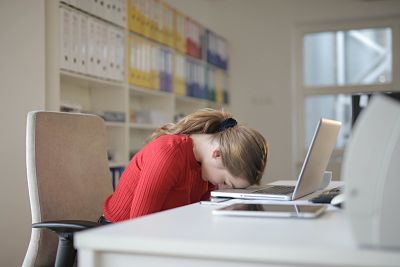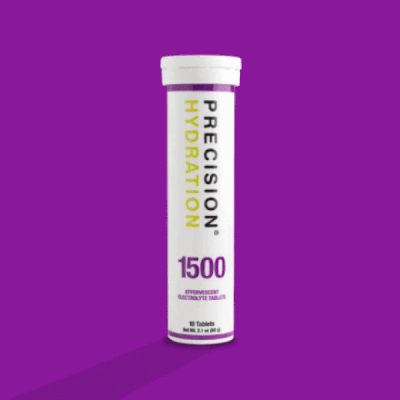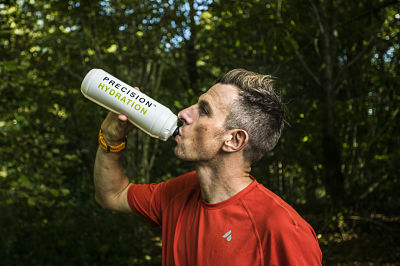Shortly after launching the Precision Fuel & Hydration product range in 2011, we started receiving emails and calls from people suffering with a condition called POTS. Most of them were very interested in PH 1000 and PH 1500 - the drinks in our range that contain the highest levels of sodium.
POTS in this context is the acronym for ‘Postural Orthostatic Tachycardia Syndrome’ - which is characterised by an abnormal increase in heart rate after sitting up or standing and is associated with many other unsavoury side-effects.
From dizziness to extreme fatigue to nausea, the condition and its symptoms can severely impact a sufferer’s day-to-day life and impede their ability to be active and train.
Over the years we’ve had feedback on a number of success stories from people with POTS whose symptoms have seemingly been eased significantly by using Precision Fuel & Hydration's electrolyte products. As a result, we thought it would be useful to summarise some of the science behind that here.
What is POTS?
Normally, when a person sits up or stands, gravity pulls some blood down into the hands, feet and stomach. The body then responds by quickly narrowing the blood vessels to prevent blood pressure from dropping too low. This all occurs without our awareness thanks to the work of the autonomic nervous system.
Unfortunately, the autonomic nervous system doesn’t work quite so well for people with POTS. Standing up and moving into an upright posture causes a rapid drop in blood flow to the heart and brain, which is met by the heart racing to catch up and compensate for this.
This drop in blood pressure can cause frequent dizziness, light-headedness and fainting.
Other POTS symptoms also include headaches, nausea, poor sleep, weakness and fatigue, poor concentration and memory, and shaking/sweating.

The condition can affect a range of people but it’s most common in women and girls between the ages of 15 and 50.
POTS sufferers who’ve been in touch with us have emphasised the fact that the severity of POTS symptoms can vary significantly. So, symptoms may be mild for some, but for others their quality of life is severely impacted.
One of the challenges with POTS is that the symptoms are constantly in flux and they wax and wane throughout the day. Due to this unexpected change in symptoms, it is very difficult to plan ahead.
I might feel ok and agree to go to a social event but then symptoms can hit me out of the blue with no warning, rhyme or reason.
I might wake up with a terrible migraine, get hit with a wave of nausea and then have multiple fainting episodes all in the span of 5 minutes. The next day I could wake up and have intense fatigue and widespread pain.
Charlotte Florez, POTS sufferer and owner of Hydrate Club
Why are electrolyte drinks effective for people with POTS?
Many people suffering with POTS have a hard time with hydration and retaining fluids.
Electrolytes, specifically sodium, play a key role in fluid balance. The total volume of extracellular fluid in the body is closely related to the amount of sodium we have on board at a given time. So, more sodium, more fluid.
Hydration is the most important thing for POTS sufferers
POTS sufferer, Lisa Faulkner
With this in mind, supplementing with some sodium in your drinks can help maintain blood volume and in turn, blood pressure.

Hypovolemia (‘hypo’ = low, ‘volemia’ = blood volume) as a result of being dehydrated lowers blood pressure and, for those with POTS especially, can make already bad symptoms much worse.
Drinking a large amount of fluids and making sure that electrolytes are a part of what you are drinking is essential to have a fighting chance at holding onto your hydration.
I have many POTS friends who have used IV fluids as a part of their therapy. If you're able to drink fluids, this method of electrolyte replenishment is much safer, convenient and cost-efficient than IV therapy.
My doctor has suggested that I drink a gallon of fluid a day with at least 80% of that being an electrolyte solution. The main electrolyte that we are taught to look for as POTS patients is sodium.
Charlotte Florez
Why Precision Fuel & Hydration specifically?
Precision Fuel & Hydration’s highest strength electrolyte drink - PH 1500 - contains 1500mg of sodium per litre when mixed accordingly. This is around 3x the sodium content of most other electrolyte drinks out there.
The higher sodium content in the PH 1500 helps the body to retain more of the fluid you’re drinking alongside it, when compared to plain water or a low-strength electrolyte or sports drink.
Now, we know what you’re thinking, that sounds pretty salty, right?
But, we predominantly use Sodium Citrate and Sodium Carbonate in our products over the conventional use of Sodium Chloride (more commonly known as just normal "table salt" which, by the way, is just 39% sodium and 61% chloride).
It’s Sodium Chloride which gives that distinctively ‘salty’ taste and so by opting for the use of other forms of sodium, it's possible to have a high-strength drink without the associated saltiness.

How to implement Precision Fuel & Hydration electrolytes into your everyday routine
Mixing one tablet or sachet of PH 1500 - (see here for the differences between our low-calorie tablets and all-natural powders - into ~500ml (16oz) of plain water and drinking to thirst at times when you feel you might be dehydrated or symptoms are flaring up particularly badly may help manage your POTS.
I prepare my PH 1500 drink the evening before so it's already made for me to drink in the mornings. It's helped me so much that I've spread the word about Precision Fuel & Hydration to fellow POTS sufferers.
Lisa Faulkner
POTS and exercise
From our reading around the condition, it seems that exercise can be helpful for those suffering from POTS but that - if badly managed – it could also worsen symptoms like fatigue and headaches through the increased fluid loss.
My experience with exercise and POTS is that you have to start small and slowly increase.
I focus on exercises that strengthen my legs so that they will have the cardiovascular strength to circulate blood back to my heart more efficiently when I stand. A recumbent bike has been a key tool to my exercise regimen.
Exercise can be much more fatiguing with POTS and I always have to plan an extended recovery time after any workout. On days when I have had better electrolyte balance, my recovery time has been shortened.
Charlotte Florez
Post-exercise rehydration is considered extremely important no matter who you are but is perhaps especially significant if you suffer from POTS. This period of time is when the body is best placed to rebalance its fluid and electrolyte levels.
So, consuming a drink containing high levels of sodium may help speed up rehydration and recovery.
